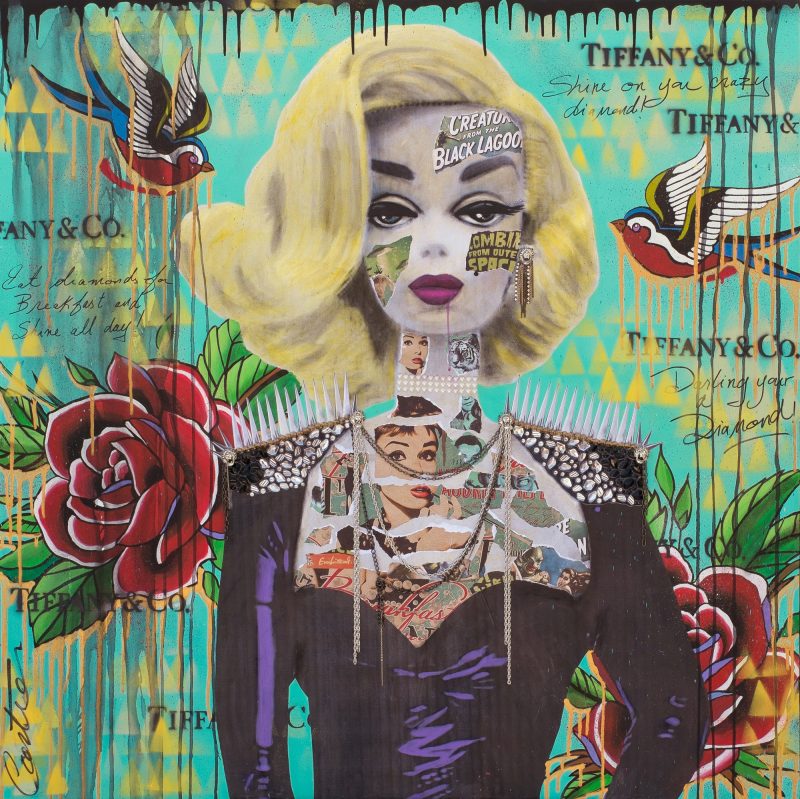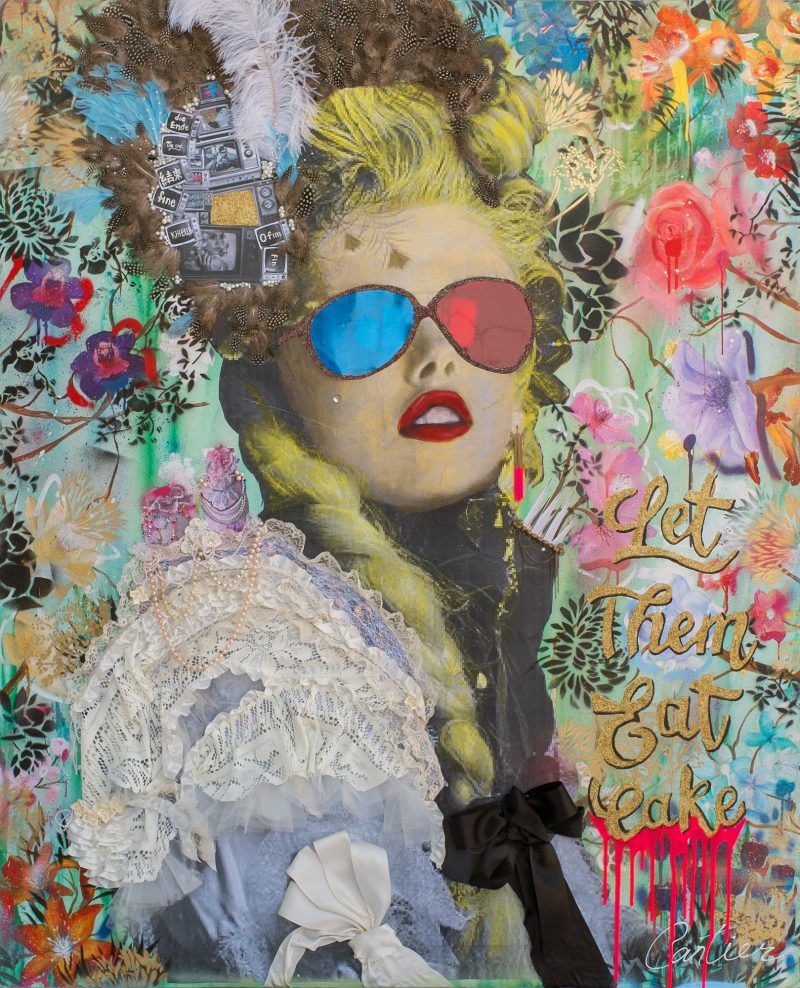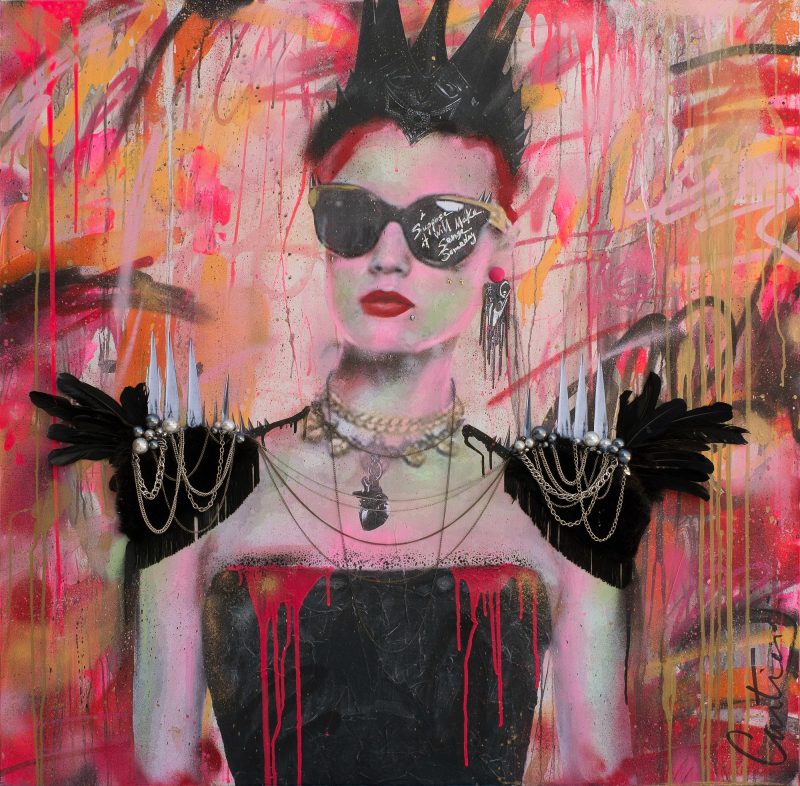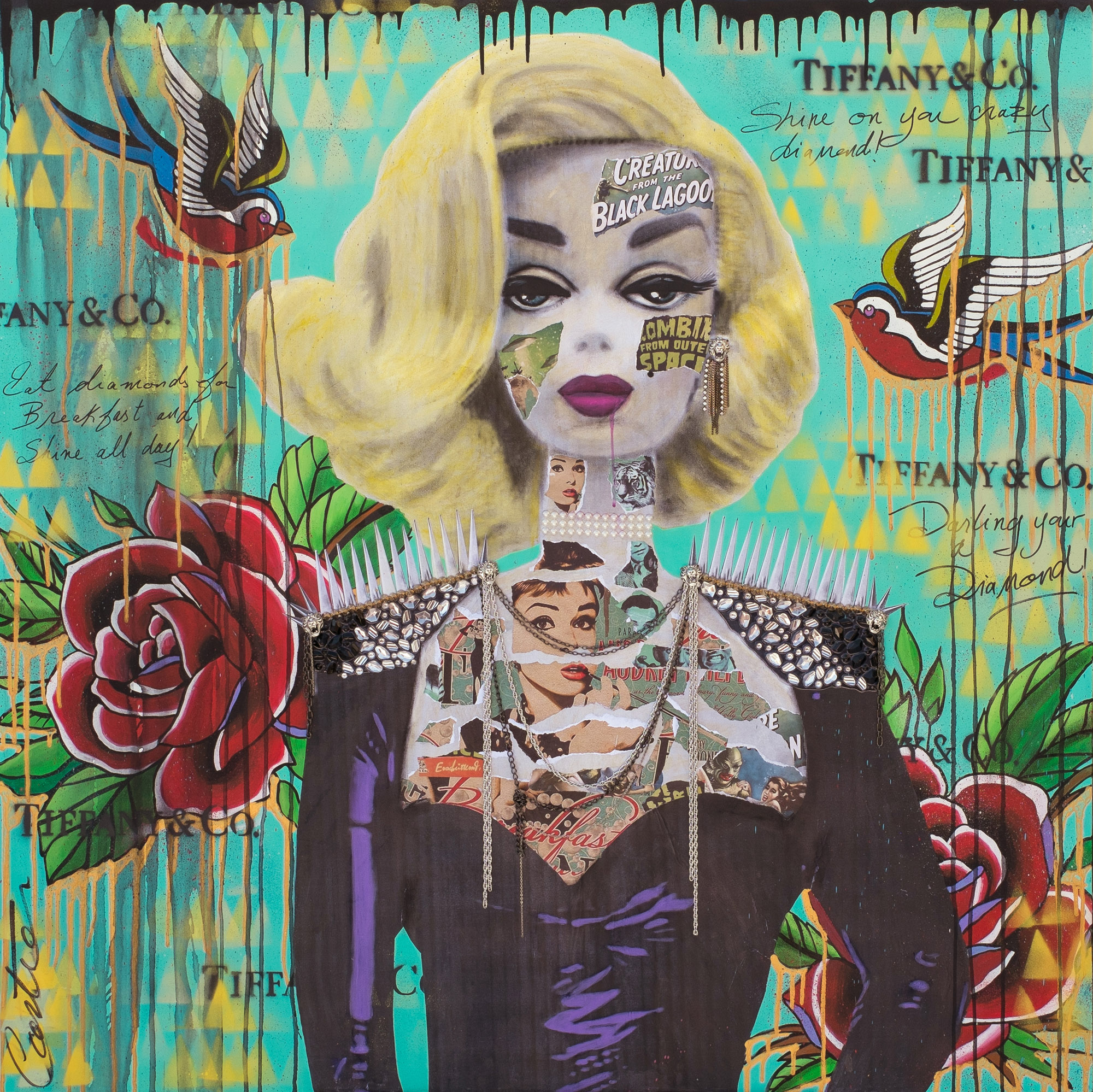
Tina Cartier’s portraits of women reflect the seductive boldness of defying traditional norms. “I want to affirm strong women possessing loads of character and redefining what it is to be female,” says Cartier, a Montreal-area mixed-media artist.

Cartier’s solo exhibition, titled The Theory of “She,” opened at Galerie le 1040 in Montreal’s
Plateau-Mont-Royal neighbourhood this past spring. More recently, the artist participated in the Mtl en Arts 2018 festival, and won the coup de coeur (public choice award). Her works are also featured on ARTBOMB, the Canadian subscriber-based daily online art auction.
Each portrait is brought to life through vivid colours and three-dimensional elements. “I use costume jewelry, spikes, beading, feathers and other things to give each portrait texture and depth,” Cartier says. “I also feature aspects of the culture that informed them.”

A lifelong artist, Cartier studied art at l’Université du Québec à Montréal and spent a subsequent year studying fine arts at Concordia University. “I’ve been doing the strong female portraits for about a year,” she says. “They’re my way of saying: it’s my time now as an artist. See me. I’m here, with a bang.”

Many of her subjects appear to be famous women but are rarely so. “I take the photographs of regular models or my girlfriends or even Barbie dolls and show how adding specific fashion elements transform them into Marilyn Monroe, Janice Joplin or Blondie,” Cartier says. “At the same time, I’m showing how each of these icons dating all the way back to Marie Antoinette have advanced the evolution of women.”

Always informed by street art, Cartier’s pieces incorporate spray-paint graffiti and other urban elements that are part of the mainstream art scene. In one piece, street posters used as papier-mâché create a three-dimensional Asian gown. Cartier, who adores martial arts, wanted to convey that delicate women can still be street-savvy.

Her clients tend to be people in their thirties and forties. “I touch on their youth by featuring a Black Sabbath hoodie, bejeweled epaulets from the punk era, and other aspects of the 1980s,” she says.

Music from the 1980s figures prominently in a piece titled “She was a waitress in a cocktail bar when she saw you,” a work that was sold quickly. Cartier has us singing The Human League’s Don’t You Want Me, Baby, with the song’s lyrics in neon lights as part of the work. The Blondie lookalike’s garb is made of black-and-white photocopies of ’80s jackets along with recycled studs from the same era. The tape cassettes and boombox background give a nod to the lingering influence of the decade’s music in encouraging women to break with past stereotypes.

Cartier’s edgy images always portray women pushing aside societal boundaries, whether they’re stepping out of the supposedly idyllic 1950s into a boxing ring or into a sequined disco jacket and sunglasses, inspired by celebrity icons. Her subjects ooze attitude with their “I’m not budging” stance and typically pink or ruby pout.

The work titled “She knows nothing of borders and cares nothing for rules,” for example, reflects a young woman who reigns over her own life. Her power derives from punk rock culture. “She’s a trashy queen, rather than a princess,” Cartier says. “Someone who knows her own mind and does what she wants.”

Cartier is currently working on The Theory of “She,” Part II, which will pay tribute to Amelia Earhart, Coco Chanel and other notable women. The exhibit will be held at Galerie 1040 in June, 2019. Her work can be viewed on her website: www.tinacartier.com.







